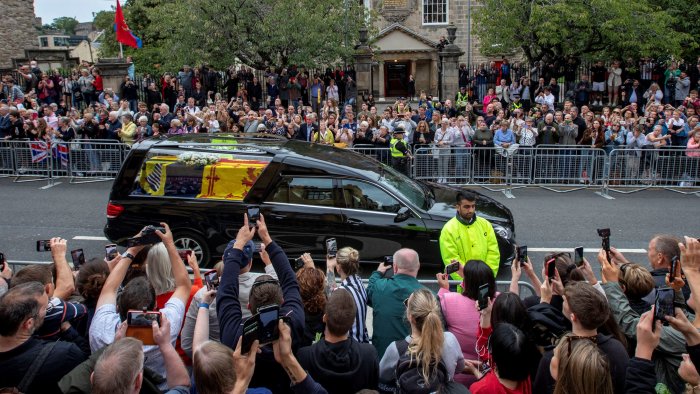This past Thursday, September 8, Queen Elizabeth II of England passed away, and for almost two weeks we witnessed one of the greatest rituals witnessed in recent times to honor the life of a person. This was public and collective grief. It represented the end of a 70-year monarchy and was at the same time a transition to something new. After a loss, we know that there is always a change (you can see my message on YouTube about this topic).
The majesty and solemnity of the funeral were something really impressive and brought us to the consciousness of the value of the funeral. Not only, but it also reminded me of the time when I taught a class on death at the University of Florida, and we covered precisely the value of the funeral, which has been considered the greatest ritual.
According to Vanderlyn Pine1 the funeral addresses four main social functions:
1. Serves to recognize and commemorate the death of a person
2. Provides an environment for the disposal of the corpse
3. It helps to reorient the afflicted into their lives, which have been broken by death.
4. It demonstrates reciprocal economic and social obligations between the bereaved and their social world.
The funeral is supposed to have two great qualities: first, we show the world that we are grieving, that we have lost someone special to us; the other is to give the opportunity to the people who accompany us in the process. In the case of Queen Elizabeth II, people have come in an unprecedented way. Among the crowd we have been able to see from the elderly to children who have wanted to be part of history; many came to pay their respects, as a way to honor it.
We have seen all the essential elements of this ritual: the expression of grief, symbolism, tradition, solemnity, and union. Another element that was present was the black clothing. The royal family dressed in black clothes depicting that they are in mourning, a color also worn by the thousands of people who attended the funeral. We have been able to notice that although many people consider mourning to be in disuse, it is something that symbolizes internal pain when expressed externally. In the current times for many people wearing black does not represent anything, however, it is what has been styled as a way of expressing that one is grieving. This custom of wearing black clothes at funerals was institutionalized by the Catholic Monarchs in the sixteenth century. Black was considered the appropriate color for funerals. It was customary for widows to all wear black, including mantle, veil and hat in the times of the Middle Ages and Renaissance.2
In my case black clothes and mourning is part of me because it is a belief established by my mother. What’s more, I took the next paragraph from my book, Let Me Live My Grief… and heal from the inside out:
Black clothing
“And you’re still in black? She wouldn’t want to see you in black.” That phrase was told to me by several people with the best intentions certain months after my mother passed away. On one occasion I replied, “Well, she would like to see me in mourning, because she instilled it in me.” My mom believed in mourning. When my dad died, she kept him three years of stiff mourning. As a twelve-year-old girl, I kept a year of mourning.
Witnessing this majestic funeral also reminded me of how hard it is if we can’t have a funeral. We have lived through a global situation with Covid-19 that prevented us from having a funeral or if we had it, we could not do it the way we wanted. I can identify myself because I lost my mother on June 7, 2020, in the middle of COVID time and I was deprived, like so many other people, to receive the desired hugs and share our grief.
Furthermore, many people choose not to have a funeral, even if they could. It is their choice because they do not believe in such a ritual. However, for those of us who believe in it and appreciate the value it represents, it leaves a void, not being able to carry it out as we had always wanted.
On the other hand, other people avoid going to funerals because they “don’t like it”, being sometimes the only way, we confirm that death has happened. The funeral is a ritual to say the last goodbye, accompanying our loved one to his last abode.
Queen Elizabeth II has been accompanied with much affection, respect, and admiration. At the beginning of our lives, we do rituals celebrating the life of a baby who has been born. When we reach the end of our lives, in the same way the funeral is that ritual to honor and at the same time celebrate our life.
1. DeSpelder, Lynn Ann & Albert Lee Strickland (2005). The Last Dance. Encountering Death and Dying. 7th Edition. McGraw-Hill Publisher: New York, NY
2. https://www.heraldo.es/noticias/sociedad/2019/12/02/por-que-viste-negro-los-funerales-1280957-310.html




